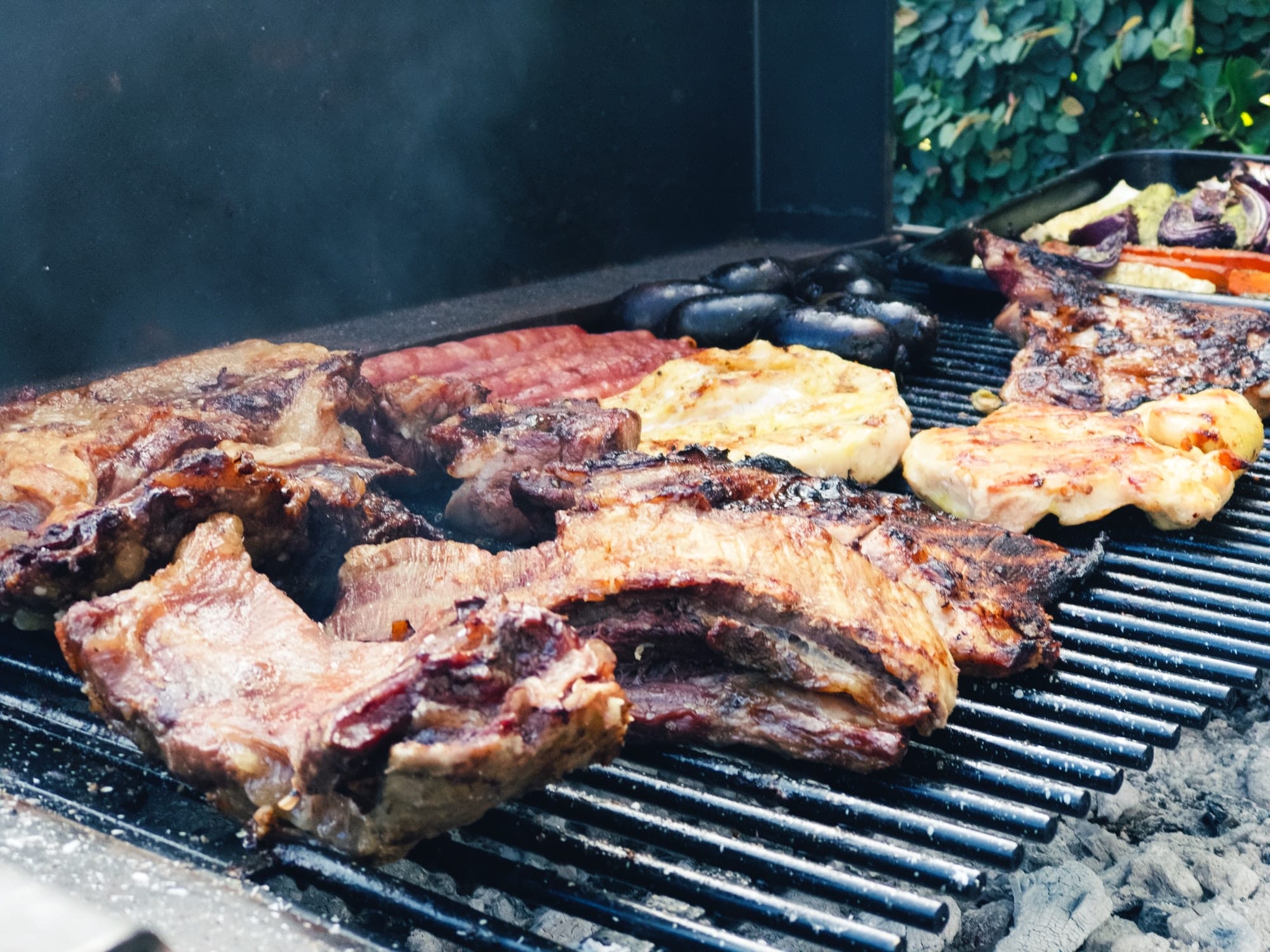What Are the Techniques for an Authentic Argentinian Asado?

When you hear the term "asado," what comes to mind first? Is it the image of juicy, succulent chunks of beef sizzling on a hot grill? Or is it the smoky, mouthwatering aroma of steak, slowly being cooked to perfection over a bed of glowing coals? For many, the term "asado" brings to mind a traditional Argentine barbecue, a culinary tradition that has been passed down through generations and is revered in Argentina as an art form. If you’re curious about this Argentine tradition, this article will guide you through the techniques needed to make an authentic Argentinian asado.
The Importance of Choosing the Right Cut of Meat
When planning an Argentinian asado, the first step is to choose the right cuts of meat. Unlike your typical American barbecue, where the focus might be on ribs or burgers, the star of an asado is beef, specifically, certain cuts of beef that lend themselves to the slow, steady heat of a grill.
Avez-vous vu cela : Can You Bake a Gourmet Almond and Pear Tart with Frangipane Filling?
In Argentina, the most popular cuts for an asado are the asado de tira (short ribs), vacío (flank steak), and entraña (skirt steak). These cuts are known for their rich, robust flavor, which is only enhanced by the cooking process. The thickness of these cuts also allows them to stand up to the heat of the grill without drying out, ensuring that the meat is tender and juicy when served.
When selecting your meat, look for cuts that have a good amount of marbling, as this fat will melt during cooking, providing flavor and moisture. Also, consider the size of the cut. Larger cuts will take longer to cook, but they can also feed more people.
Avez-vous vu cela : Can You Create a Gourmet Roasted Brussel Sprouts with Pancetta and Pecorino?
The Art of the Fire: Charcoal vs Coals
In the world of asado, the grill is your canvas and the fire is your paintbrush. The type of fire you use can greatly influence the flavor of your meat, and mastering the art of the fire is a crucial aspect of asado preparation.
Argentinian asado is traditionally cooked over a wood fire, with the wood being reduced to coals before the meat is placed on the grill. This imparts a unique, smoky flavor to the meat and allows for a more even and controlled cooking process.
While charcoal can be used in a pinch, it’s not the preferred choice for a traditional asado. That’s because charcoal burns hotter and faster than wood, which can lead to the meat being seared on the outside while still raw on the inside. If you’re aiming for authenticity, stick with wood coals. They may take longer to prepare, but the result will be worth it.
The Asado Cooking Process: Patience is Key
Now that you’ve chosen your meat and prepared your fire, it’s time to start cooking. One key thing to remember when grilling Argentine-style is this: patience is key. Asado is not about rushing to get the meat cooked as quickly as possible. Instead, it’s a slow, deliberate process that allows the meat to gradually absorb the smoky flavors of the fire.
To begin, place your cuts of meat on the grill, bone side down. This allows the bone to act as a heat shield, protecting the meat from the direct heat of the coals. This is a unique aspect of asado cooking, and it’s part of what gives the meat its distinct flavor and tenderness.
After the meat has been on the grill for a while, you can begin basting it with a mixture of salt, water, and vinegar. This not only adds flavor but also helps to keep the meat moist as it cooks.
Serving the Asado: A Communal Affair
An asado is more than just a meal; it’s a social event. Traditionally, an asado is a communal affair, with family and friends gathering around the grill to share in the cooking process and enjoy the fruits of their labor.
When serving the asado, it’s common to present the meat on a large platter, allowing guests to take what they like. Serve the beef with traditional Argentine side dishes like chimichurri—a tangy sauce made with parsley, garlic, vinegar, and oil—and provoleta, a type of grilled provolone cheese.
Remember, an asado is about more than just the food; it’s about the experience. So, gather your friends, prepare your grill, and get ready to embark on a culinary journey to Argentina. With patience, the right ingredients, and a little bit of fire, you’ll be cooking up an authentic Argentinian asado in no time.
Mastering the Asado Sides: Salsa Criolla and Chimichurri
To fully appreciate the Argentinian asado experience, you must not overlook the importance of the sides. The two most quintessential sides that accompany an asado are salsa criolla and chimichurri. Salsa criolla, a delightful mix of diced tomatoes, onions, and peppers, is a traditional Argentine condiment. Its vibrant freshness balances the savory richness of the barbecued meats, bringing a burst of flavor to every bite.
Making salsa criolla is simple. Start by chopping red onions, tomatoes, and bell peppers into small pieces. Then, add some finely chopped parsley and garlic. The key to salsa criolla lies in its dressing. For that, combine olive oil, vinegar, salt, and a touch of lemon juice, then drizzle this over the chopped vegetables. Let it sit for a few hours before serving to allow the flavors to meld together.
Chimichurri, on the other hand, is a classic Argentine sauce that adds a tangy, herby punch to the grilled meats. The main ingredients are parsley, garlic, vinegar, and olive oil. Some variations also include oregano, red pepper flakes, and lemon juice. Mix all the ingredients together, then let the chimichurri sit for a few hours to allow the flavors to deepen. This green delight brings a tangy and fresh contrast to the smoky, earthy flavors of the asado.
The Asado Experience: More than a Meal but a Tradition
The Argentine asado is more than a simple barbeque—it’s a cultural tradition, a gathering of friends and family, and an expression of Argentine identity. As Jason Pittock, a Buenos Aires-based chef, said, “An asado is a way of life.” It is a nod to Argentina’s history, a tribute to the gauchos (Argentine cowboys) who roamed the plains of the Pampas, grilling wild cattle over open fires.
The asado is a testament to the Argentine spirit of community and connection. It is through this communal affair where stories are shared, laughter is heard, and bonds are strengthened. Whether you’re in the bustling streets of Buenos Aires or by the serene landscapes in Patagonia, the asado remains a cherished tradition that embodies the heart of Argentinian culture.
So, the next time you gather around the grill for an asado, remember that you’re not just cooking a meal—you’re partaking in an age-old tradition that’s steeped in history and community connection. It’s a culinary journey that extends beyond the exquisite cuts of meat and Argentine grilling techniques, beyond the chimichurri and salsa criolla, and into the very essence of what it means to share a meal, Argentine style.
In Conclusion
The authentic Argentine asado is a culinary tradition that goes beyond merely grilling meat. It involves careful selection of the right cuts of meat, mastery over the art of grilling over wood coals, and patience in the cooking process to let the flavors develop fully. But most importantly, it’s about community and connection. It’s about gathering friends and family, sharing stories, and creating memories.
Whether you’re an experienced griller or a novice, there’s something incredibly satisfying about mastering the art of the Argentine asado. From selecting the perfect cut of skirt steak, to preparing your salsa criolla, to patiently watching your meat cook over the smoky fire, every step is a testament to the love and care that goes into this culinary tradition.
So, go ahead and fire up the grill. Remember, it’s not just about the destination – it’s about the journey. And in the case of the authentic Argentine asado, the journey is just as delicious, fulfilling, and memorable as the meal itself.
